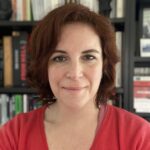Link to Pubmed [PMID] – 19197371
PLoS ONE 2009;4(2):e4353
BACKGROUND: Understanding the series of morphogenetic processes that underlie the making of embryo structures is a highly topical issue in developmental biology, essential for interpreting the massive molecular data currently available. In mouse embryo, long-term in vivo analysis of cell behaviours and movements is difficult because of the development in utero and the impossibility of long-term culture.
METHODOLOGY/PRINCIPAL FINDINGS: We improved and combined two genetic methods of clonal analysis that together make practicable large-scale production of labelled clones. Using these methods we performed a clonal analysis of surface ectoderm (SE), a poorly understood structure, for a period that includes gastrulation and the establishment of the body plan. We show that SE formation starts with the definition at early gastrulation of a pool of founder cells that is already dorso-ventrally organized. This pool is then regionalized antero-posteriorly into three pools giving rise to head, trunk and tail. Each pool uses its own combination of cell rearrangements and mode of proliferation for elongation, despite a common clonal strategy that consists in disposing along the antero-posterior axis precursors of dorso-ventrally-oriented stripes of cells.
CONCLUSIONS/SIGNIFICANCE: We propose that these series of morphogenetic processes are organized temporally and spatially in a posterior zone of the embryo crucial for elongation. The variety of cell behaviours used by SE precursor cells indicates that these precursors are not equivalent, regardless of a common clonal origin and a common clonal strategy. Another major result is the finding that there are founder cells that contribute only to the head and tail. This surprising observation together with others can be integrated with ideas about the origin of axial tissues in bilaterians.

